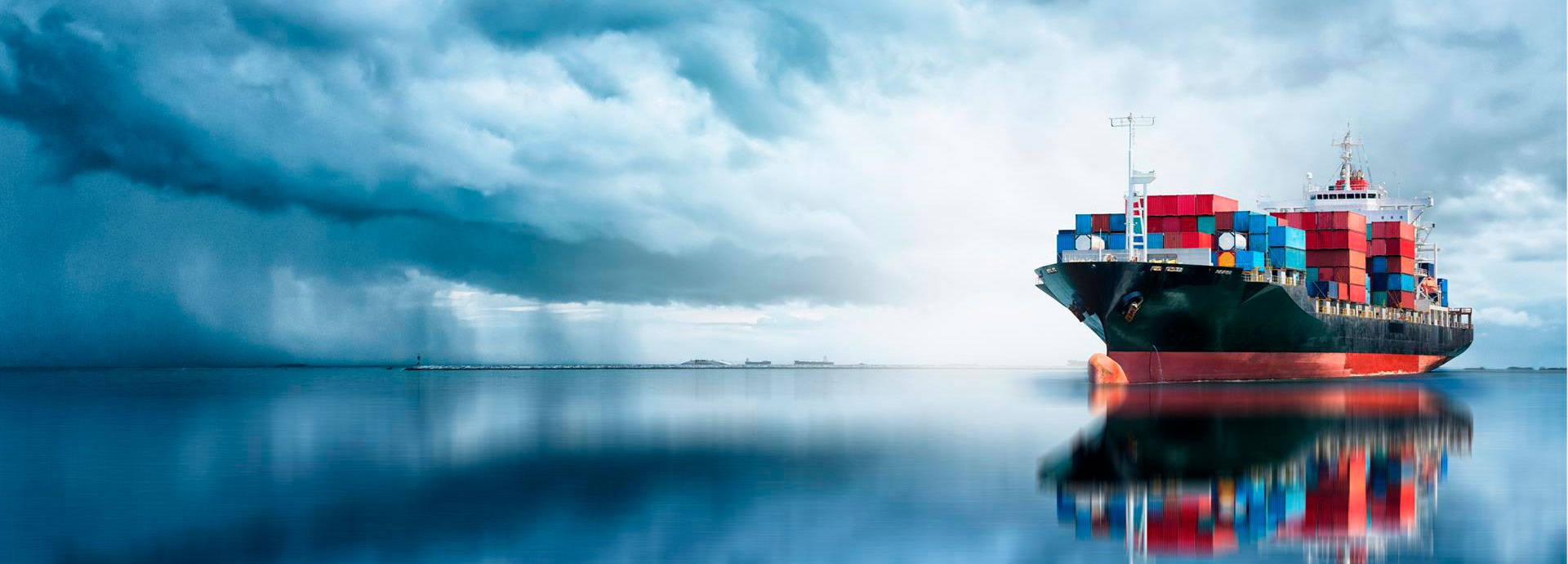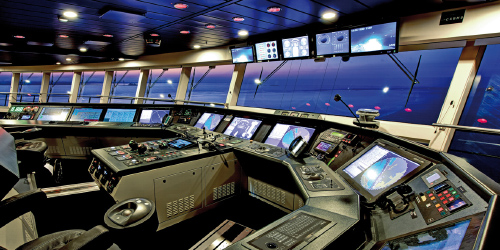

It is safe to say 2020 has been an unusual year. But while coronavirus may have brought normal life to a standstill, there has been blistering progress in some areas. In marine, a year that started with IMO2020 – the global switch from high- to low-sulphur fuels – became more notable for landmark achievements in vessel autonomy and connected operations.
I’m proud to say that despite a heavily disrupted year, Wärtsilä Voyage made very real steps towards its long-term vision of a smarter marine business. In many cases, the increased focus on digitalisation brought by the pandemic actually accelerated development.
- Sean Fernback, President, Wärtsilä Voyage
One such example is the introduction of Wärtsilä Cloud Simulation training solution. When the pandemic hit in the first quarter of the year, seafarer training institutions across the world were reduced to offering only the training they could provide online to remote students. That excluded the extensive simulation training that modern seafarers and cadets rely on to familiarise themselves with equipment, processes and emergency situations.
Vladimir Ponomarev, Director Solutions, Wärtsilä Voyage, explains the impact. “Shipping carried on during lockdowns, but training was in a much more difficult situation. A lot of training centres were closed which made a negative impact on maritime education and competence maintenance programs.”
Remote operations
At a time when it was more important than ever to keep global supply chains open, suspending the flow of cadets into ship operations was not an option. Fortunately, Wärtsilä had been developing its solution for some time. Cloud Simulation allows instructors to deliver simulation training courses to student seafarers studying at home and other remote locations, without the hardware usually needed in simulation training centres.

“We were able to bring out Cloud Solutions in just two months, by the end of April,” recalls Ponomarev.
Cloud simulation is just one example of how online services were able to assist shipowners as the pandemic restricted their operations. Wärtsilä also significantly expanded the resources available at its customer support centres, which offer around the clock monitoring of ship equipment and real-time troubleshooting. In some cases, the use of remote engineers was able to cut down the time needed to complete a service from two weeks to two hours. And as time onboard became a more precious resource than ever, the company also worked to streamline installation times for many of its systems.
Ponomarev believes that the increased acceptance of remote solutions will have a lasting impact on shipping. This extends beyond training and technical support. Two related areas – vessel autonomy and connected solutions – have also seen important developments in the past year, albeit unrelated to the pandemic.
Fleet Operations Solution (FOS) is central to Wärtsilä Voyage’s vision of a more connected and more efficient shipping business. At its simplest, FOS integrates the ECDIS and planning stations on the bridge to offer an array of functions around voyage optimisation, vessel performance, compliance and navigational safety. But what was launched initially as an integrated navigation solution has developed over the past year to become part of ship owners’, managers’ and operators’ wider business management systems.
From ship to shore
“We have made that step to open up FOS to the broader shoreside ecosystem,” explains Kay Dausendschoen, Solutions Director, Wärtsilä Voyage. “We have also developed the Solutions Advisory Service to communicate that value to our customers. I think they have been surprised at what they can achieve.”

FOS has evolved from focusing on voyage optimisation to giving shipping companies a better understanding and suggestions for improving of the overall performance of their assets. The third step has been around compliance. Various stakeholders have an interest in vessel performance. For example, the EU requires shipowners to record transport work and fuel consumption for its MRV regulation, while charter parties demand specific data to show that terms are being met. The ability of FOS to provide this data transparently and in the right format saves shipowners from a big administrative burden.
But even this use case only scrapes the surface of what can be achieved, says Dausendschoen. The Solutions Advisory Service offers a consultancy approach to help shipping companies make the most of FOS, in the same way that major management software companies have consultancy arms to show businesses how to deploy their solutions.
“We are entering an existing market,” Dausendschoen admits. “There is already management software for shipping companies. But it can deliver much more value when combined with data from vessels.”
The integration into shipping business management systems is by no means the end of the road for FOS. The connectivity inherent in the system can be extended to ports using Wärtsilä Navi-Port – another critical piece of the marine ecosystem launched this year. In February, Wärtsilä Partnered with Carnival Maritime and the Hamburg Vessel Coordination Centre (HVCC) to test the new solution for just-in-time sailing. Navi-Port allows ships and ports to share information, allowing ships to automatically adjust their speed to achieve the optimal arrival time according to the conditions at the port. Ports can plan their port and terminal operations more efficiently while also vessels are saved from burning fuel at anchor while they wait for a berth.
Just-in-time arrivals is just one element of smarter port operations where Wärtsilä Voyage systems could make a difference. Vladimir Ponomarev explains: “We are looking into the larger picture of stakeholders involved in cargo operations at ports and across the logistics chain to see if we can add value. Today we know how fleets are operated, and we believe we can add these port-related stakeholders into the picture.”
Advancing autonomy
In parallel with more connected ship operations and a more connected marine ecosystem, developments towards vessel autonomy also gathered pace in 2020. One keynote project is the IntelliTug project with PSA Marine. In March the PSA Polaris, a harbour tug retrofitted with a suite of Wärtsilä technology to enable autonomous navigation, completed its sea trials.

Furthermore, the launch of SmartMove is an important step towards greater acceptance of autonomous solutions, says Hendrik Busshoff, Product Manager Autonomy, Wärtsilä Voyage. The various tools that comprise the package have been available individually before. But in SmartMove there is a suite that shows very clearly the kind of autonomous operation that vessels are capable of.
“There are still a lot of very different viewpoints around autonomy,” says Busshoff. “On the one hand you have projects like IntelliTug, where the owners know the value that autonomous operation can bring without knowing exactly the technology – that’s where we can provide the technological insight. On the other hand, there are companies that just want to do something with autonomy without knowing the value it can bring. I think the balance will continue to shift next year.”
Autonomous technology is, perhaps strangely, not all about autonomy. The enabling technologies are also valuable for improving manned operations. Sensor fusion is one example. Busshoff notes that Wärtsilä has collected a great deal of experience with near-field camera and radar over the past year. These technologies enable object detection at close range, with high enough fidelity to – for example – distinguish a seal from a stranded surfer. This is indispensable to autonomous operations but can also boost the awareness and capabilities of human crew significantly. Based on the company’s experience with nearfield technologies via autonomous projects, Wärtsilä will release its own camera pods deploying nearfield camera arrays next year.
The past year has witnessed some major milestones in the technologies that will define shipping for long into the future. It has also seen some of the long-term trends that dominate the market accelerating. Higher fuel prices because of IMO2020 are just one factor that has heightened cost sensitivity for shipowners. A depressed global economy and trade – the direct result of the pandemic – has also contributed to the squeeze. At the same time, the growing focus on reducing emissions has also encouraged ship operators to look at innovative ways to cut fuel consumption.
“Technological developments the past year in the fields of remote services, connected operations and autonomous navigation are part of the solution to those pressures,” says Sean Fernback, President, Wärtsilä Voyage.
Looking forward to 2021, I am optimistic that these innovations will continue reaping rewards for our customers and contribute to smarter, safer and more sustainable shipping.
- Sean Fernback, President, Wärtsilä Voyage
Related solutions
Did you like this? Subscribe to Insights updates!
Once every six weeks, you will get the top picks – the latest and the greatest pieces – from this Insights channel by email.






